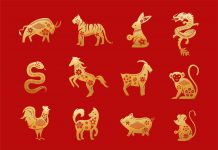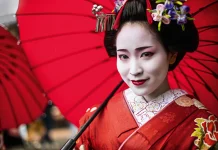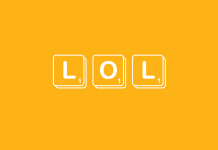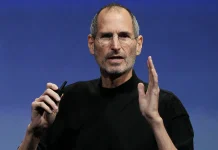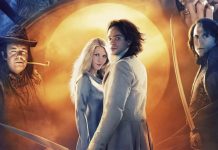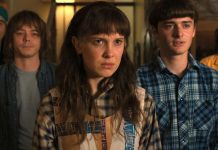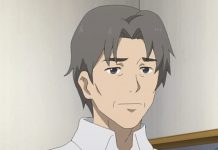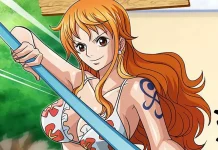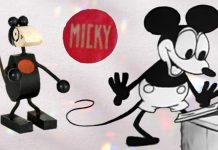Time has passed… in a flash. Twenty years ago to the day, on June 26, 1997, the British author JK Rowling published the first volume of the Harry Potter saga. First printed in a thousand copies, Harry Potter and the Sorcerer’s Stone was released in the most total discretion … Before knowing, over the years, an extraordinary worldwide success, allowing Rowling to extend the adventure with six other volumes (sold four hundred and fifty million copies worldwide), eight films and loads of merchandise.
Even today, the magic continues to operate… and is a commodity: a website and a play (among others) have emerged and a new series of films is in production.
Here is indeed a work having sealed the alliance of popular culture and scholarly culture, of the fairy tale and the political narrative, of the learning novel and the most unbridled fantasy. So many fundamental traits that have promoted the adventures of the young wizard to the rank of transgenerational work, lending themselves to multiple interpretations.
The large volume of Harry Potter’s works is delusional: they are not big books, they are schematic concatenations of actions at the chapter level. These are classic patterns of putting a reader on hold when faced with an outcome.
On a deeper level, there is also the construction of a story which takes up the old recipes of myths: a young hero is in the process of building himself; he is an orphan, he loses his genealogy… He must therefore build his individual course through qualifying tests, which will constitute the stages of the book.
Table of Contents
Who is J. K. Rowling

Joanne Kathleen Rowling was born July 31, 1965 in Yate, South Gloucester, England. She felt the urge to write from the age of 6, and naturally turned towards literary studies. She joined the University of Exeter to study French, and spent a year in Paris for a literature course at the Sorbonne. Back in London, JK Rowling does odd jobs, including that of secretary for Amnesty International. It was during this period of instability, during a train trip, that he thought of writing about a boy wearing round glasses and a scar, like a dazzling vision. Then she moved to Portugal, where she met her first husband and gave birth to her daughter in 1993. After her divorce, she returned to England and had the first volume of the saga published in 1997. The second part appeared a year later, and was already an overwhelming success, ranking first in hardcover books for adults in one month. For ten years, JK Rowling wrote a seven-part saga, which broke all sales and popularity records around the world.
In addition to the adventures of the young wizard with the scar, JK Rowling has also published other works closely or remotely related to the fictional universe that she developed for more than ten years. Among them we can cite Quidditch Through the Ages and Fantastic Beasts , both published in 2001, or The Tales of Beedle the Bard in 2008, whose main objective is to deepen certain aspects of the world of Harry Potter that she could not develop in the main frame.
Film adaptations of her books
Although she was not directly involved in the adaptation of the Harry Potter books into films, JK Rowling has always kept an eye on the production of the latter, despite the fact that the rights belong to the Warner Bros. Pictures since 2001. She was generally satisfied with all the adaptations and even appreciated certain freedoms taken, but she makes several criticisms about certain choices of the writers. From 2016, JK Rowling fully supervises the script of the films Fantastic Beasts directed by David Yates, which take place in the Harry Potter universe more than sixty years before the events of the first book. A second opus entitled The Crimes of Grindelwald was released in 2018, the third being scheduled for 2022. In total, this new saga should count a total of five feature films.
With the American studio Warner Bros (WB), giant of world cinema, colossus of production and distribution (one of the oldest – 1923), they make JK Rowling a golden offer, which she refuses in the first place: resisting the lure of profit, it negotiates the juicy contract, in order to rather keep a certain control and right of scrutiny over production, to the detriment of its financial advantage. Harry potter and the sorcerer’s stone, first volume of the series, is adapted for the cinema in 2001. And it will take 10 years, eight films (the last book is treated in two separate feature films) and four different directors for the entire saga to be brought to the screen.
The success of the saga
The success of Harry Potter first reflects a strong tendency towards the massification of culture: there is a centralization on a small number of cultural objects which are consumed on a massive scale. Why this object rather than another? Because Harry Potter was conceived, semiotically, in a very particular way. The chapters are short, centered on a dynamic of action… Then, this one stops, starts again with another dynamic, stops again, and so on. This segments the narrative process into modules, like in television series for example.
The success is not without criticism and, when in January Harry Potter had almost won the much envied Whitbread Prize, an “adult prize”, some protested against the infantilization of culture and the first reproaches fell: lack of psychological depth of the characters, various borrowings … Of course, we find elements and nods to his predecessors: the zany of Lewis Carroll, the Gothic side of Tolkien, the fight between Good and Evil from CS Lewis, the Wizarding World of Diane Wynn Jones and, of course, the fantasy of Roald Dahl. Rowling cannot be faulted for reading the classics when writing within such a rich literary legacy. The sum of the parts does not make the whole.
But what does the child want? This is inevitably the question posed by this planetary craze which deserves investigation. In France, Great Britain as among the Anglo-Saxons, the fashion was to realism, with books addressing the problems of society, drugs, juvenile delinquency, minor pregnancy or homosexuality. JK Rowling bewitches with the universe of a typically British boarding school where there is neither computer nor electricity, a universe free from all the anxiety-inducing jumble of contemporary life.
JK Rowling has captured and responded to the anguish of a generation of children whose parents have unstable emotional, professional and geographic lives. With its magical world, it prolongs and protects childhood while initiating fear, loneliness and independence.
Book Series In Order
The deserved success of the Harry Potter saga has made JK Rowling’s work one of the most analyzed and dissected. Not to mention the books published following the films! Not all the essays or works that have been published are equal, but they can all shed interesting light on this now cult work. For 5 years JK Rowling planned the adventures of Harry Potter. In the course of her thoughts, she took notes on everything she found: notebooks, pieces of paper, tablecloths. After this tedious first step, she started writing novels. Her method paid off, since all the intrigues flowed naturally.
1. Harry Potter and the Sorcerer’s Stone

Harry Potter and the Philosopher’s Stone is the first novel in the literary series centered on the character of Harry Potter, created by JK Rowling. Released on June 26, 19972, it is initially printed in 500 copies. After the death of his parents ( Lily and James Potter ), Harry Potter is taken in by his maternal aunt Petunia and his uncle Vernon at the age of one. The latter, always animated by a ferocious hatred towards the parents of the boy whom they describe as “bizarre” people, even “monsters” 16, treat their nephew coldly and remain indifferent to the humiliations their son Dudley inflicts on him. Harry ignorant of the history of his parents, if only they were, it seems, killed in a car accident. However, on Harry’s eleven birthday, a half-giant named Rubeus Hagrid comes to pick him up to inform him of his enrollment at Hogwarts, a wizarding school where he has been enrolled since his birth, and to give him his letter. He reveals to him that he has always been a wizard, just like his parents were, actually killed by the most powerful dark mage in the wizarding world: Voldemort (nicknamed “The One-We-Should-Not-Be -Speak)”or“ You know who ”.
Who is Harry Potter? And who is the dreadful V., the mage whose name no one dares to pronounce? Harry Potter and the Sorcerer’s Stone won the Witches Prize for the 1999 novel. Harry Potter bewitches you from the first paragraphs and you provides a continuous feeling of jubilation.
2. Harry Potter and the Chamber of Secrets

Harry Potter and the Chamber of Secrets is the second novel in the literary series centered on the character of Harry Potter created by JK Rowling. It was published on July 2, 1998 by Bloomsbury. JK Rowling struggles to complete The Chamber of Secrets, fearing that she will not meet the expectations of The School of Wizards, the previous volume and start of the series. After delivering the manuscript to Bloomsbury on schedule, she resumes to examine further, the need for six additional weeks.
In late July, Harry is visited by Dobby, a house elf, who warns him and advised him not to return to Hogwarts where a dangerous conspiracy is preparing. But Harry chooses to ignore this warning. In response, Dobby causes an incident in the Dursley kitchen. Furious, Uncle Vernon locks Harry in his room, forbidding him to return to Hogwarts. Ron and his two brothers Fred and George therefore come to free him with the help of an old flying car, borrowed from their father, and Harry returns to the Burrow, the Weasleys’ family home, to spend the remainder of Summer.
3. Harry Potter and the Prisoner of Azkaban

Harry Potter and the Prisoner of Azkaban is the third novel in the literary series centered on the character of Harry Potter created by JK Rowling. This book was the fastest to write the first three rounds, since she did need a year of work. JK Rowling began writing it in the spring of 1998, the day after the previous book, The Chamber of Secrets, was completed.
Rowling’s expected aspect in this book was to introduce the character of Remus Lupine, who is one of his 3 favorites. Rowling added that The Prisoner of Azkaban was “the best writing experience” she’s ever had: “I was in a very comfortable place writing a third book. The concerns were behind me, and the attention of the press was not yet excessive ”.
The novel has twenty-two chapters. From the beginning of the plot, the hero and the reader are informed of the escape of a very dangerous prisoner of Azkaban by the name of Sirius Black. Harry quickly learns that Black has escaped to find him. It seems that the man wants to kill Harry in order to allow Lord Voldemort, his master, to regain the extent of his power.
4. Harry Potter and the Goblet of Fire

Harry Potter and the Goblet of Fire is the fourth novel in the literary series centered on the character of Harry Potter created by JK Rowling. Just before attending the Quidditch World Cup between the teams of Ireland and Bulgaria, Harry Potter has a strange dream in which he witnesses the murder of an old Muggle gardener by Voldemort, while the gardener overhears a conversation about Harry.
At the World Cup campsite, just after the match, Death Eaters burst in in the middle of the night and cause panic among the supporters, by making the Dark Mark appear in the sky, and announcing the return of the black mage. Harry spends the rest of the summer vacation at the Burrow under close surveillance, and begins a new year at Hogwarts, heralded as a true year of competition. Indeed, the school exceptionally hosts a great event: the Three Wizards Tournament. On this occasion, Hogwarts also welcomes delegations from two other schools of magic: those of Durmstrang and Beauxbatons. Against all odds, while the three champions are chosen by the Goblet of Fire ( Viktor Krum for Durmstrang, Fleur Delacour for Beauxbâtons and Cedric Diggoryfor Hogwarts ), a second Hogwarts champion is appointed, and this is Harry Potter.
5. Harry Potter and the Order of the Phoenix

Harry Potter and the Order of the Phoenix is the fifth novel of the literary series Harry Potter created by JK Rowling and centered on the character of the same name. A few weeks after the rebirth of Voldemort, Harry and his friends Ron and Hermione make their entrance in 5 th year at Hogwarts, increasingly controlled by the Ministry who refuses to believe in the return of the Dark Lord and made sure to discredit Albus Dumbledore.
Dolores Ombrage, Deputy Secretary to the Minister and new Defense Against the Dark Arts professor, establishes a form of dictatorial regimeat Hogwarts by forbidding students to practice defense spells, as well as spreading the idea of Voldemort’s return. Hermione then creates ” Dumbledore’s Army “, an underground student association in order to prepare for external dangers. Members of the Order of the Phoenix for their part, under the leadership of Dumbledore, regularly gather in London at Sirius Black’s, to organize the defense of the country and the awakening of conscience, while countering the measures instituted by the ministry.
6. Harry Potter and the Half-Blood Prince

Harry Potter and the Half-Blood is the sixth novel in the literary series centered on the character of Harry Potter created by JK Rowling. The English version was released simultaneously, July 16, 2005, at midnight, in a large number of English-speaking countries.
Harry is entering his sixth grade at Hogwarts School of Witchcraft. He then comes into possession of a potion book bearing the word “property of the Half-Blood Prince” and begins to learn more about the dark past of Voldemort who was still known as Tom Riddle.
At Hogwarts, the students discover that Slughorn is the new teacher for Potions class. Snape, meanwhile, reclaims the position of Defense Against the Dark Arts Professor. In the course of potions, Harry collects the old book of the “Half-Blood Prince”. The prince’s annotations allow him to become the top of his potions class and Slughorn’s favorite student. Annotations in the book suggest that the “Prince” invented spells, such as “Levicorpus”. The identity of the Prince is unknown and Harry comes to believe that the “Prince” could be his father, James Potter.
7. Harry Potter and the Deathly Hallows Part

Harry Potter and the Deathly Hallow is the seventh and final novel in the literary series centered on the character of Harry Potter created by JK Rowling. The book is adapted into a film in two parts +, released in 2010 and 2011 respectively.
This year Harry is 17 and Harry is not returning to Hogwarts school after Dumbledore’s death. With Ron and Hermione he devotes himself to the last mission entrusted by Dumbledore, the hunt for Horcruxes. But the Dark Lord reigns supreme and hunts down the three faithful friends who will be reduced to hiding. From ordeal to revelation, Harry’s courage, choices and sacrifices will be decisive in the fight against the forces of evil.
The birth of a Harry Potter universe
On a train from Manchester to London, 25-year-old secretary Joanne Rowling gets lost in thought and imagines a magical universe in which a little wizard would grow up. She has no pencil or paper so she develops the idea in her head for four hours. Arriving in London she already has the plot of her book, Hogwarts Castle and several characters. “ I was convinced that the only thing I really wanted to do was write short stories, even though my parents thought my vivid imagination was a fun oddity that would never pay a mortgage or a pension. Becoming a writer was her dream but before that she wrote only for herself . ” Joanne Rowling, during a Ted Talk at Harvard in 2008.
That same year she lost her mother and went to live in Portugal, to get a change of scenery and became an English teacher. There, she continues to write about her magical world in cafes, late at night in her room. But she stopped and did not resume writing until two years later when she returned to the UK, to Edinburgh after a failed marriage, no job and a dependent child. She falls into depression. But everything she’s been through feeds her novel.
Fantastic Beasts

Fantastic Beasts and Where to Find Them is a short guidebook written by JK Rowling along with Quidditch Through the Ages for the humanitarian association Comic Relief.
This is a directory of fantastic creatures, some of which appear in the books of his Harry Potter saga. In 2016 JK Rowling published under the same title the scenario of the film taken from this book.
The book, prefaced by the character of Albus Dumbledore, contains a presentation of its fictional author Newt Scamander. It also presents what a fantastic animal is, the history of the conception of fantastic animals by Muggles and the importance of “Magizoology”. A classification of the animals listed is established according to the criteria of the “Ministry of Magic”: the more an animal has crosses the more it is considered as dangerous.
The money brought back by the book and its translations is entirely donated to the humanitarian association “Comic Relief” which collects funds to donate them to various associations fighting against poverty and social injustice, such as ” Oxfam ” and “Save The Children”.
The book presents the different species of fantastic animals, how to take care of or get rid of them, their level of danger and their natural habitat. It has a fairly long introduction outlining the history of the classification of the various fantastic beasts and the issues that exist with their existence in relation to the Muggle world. Classification issues also help to understand the differences between animals, beings and spirits and to know the criteria for determining in which category to place a creature.
Trailer of the movie






